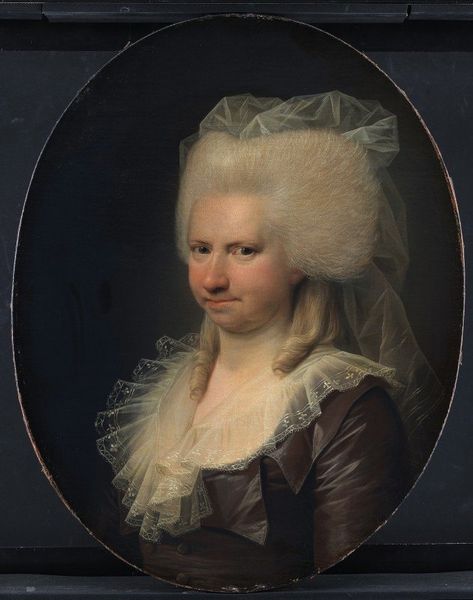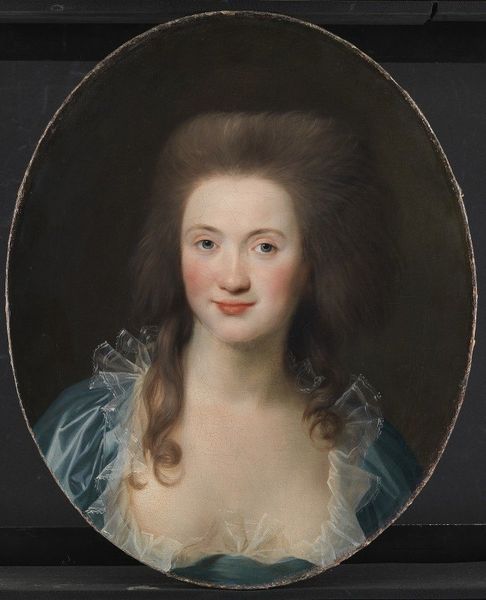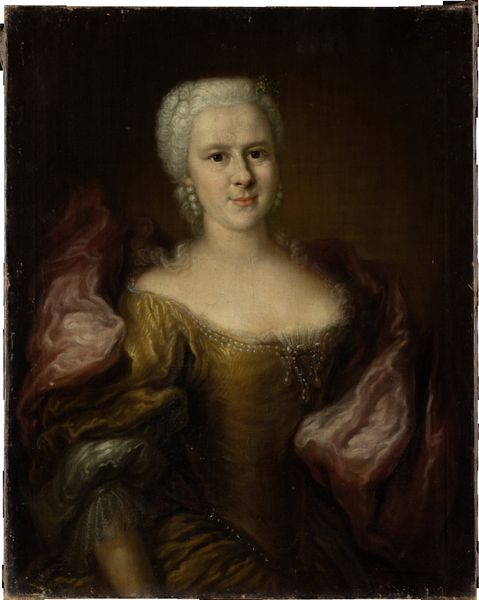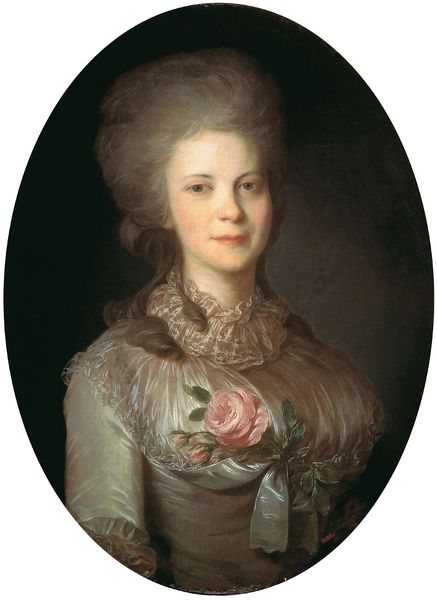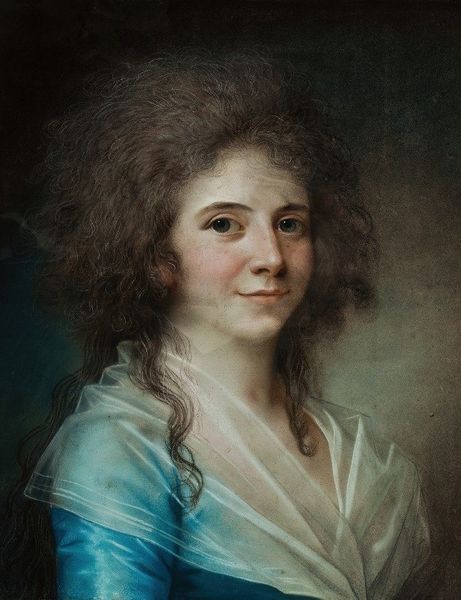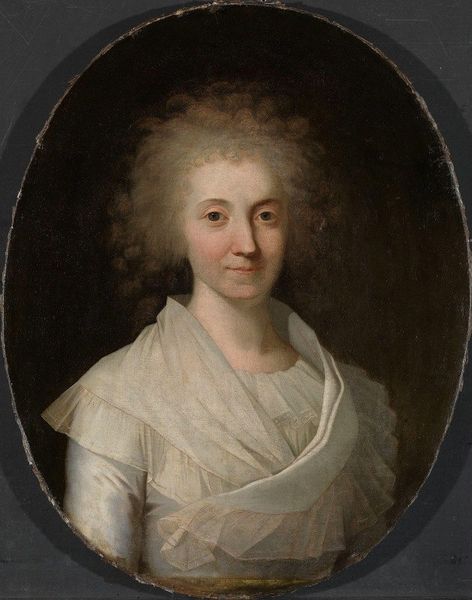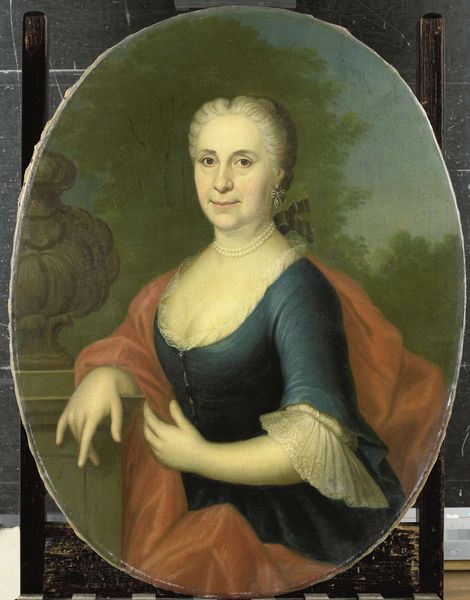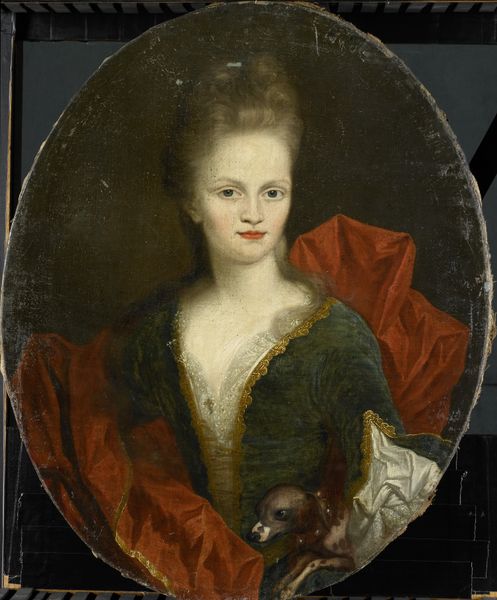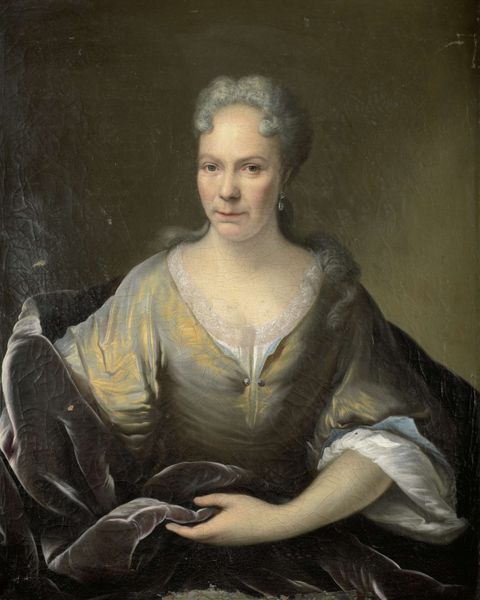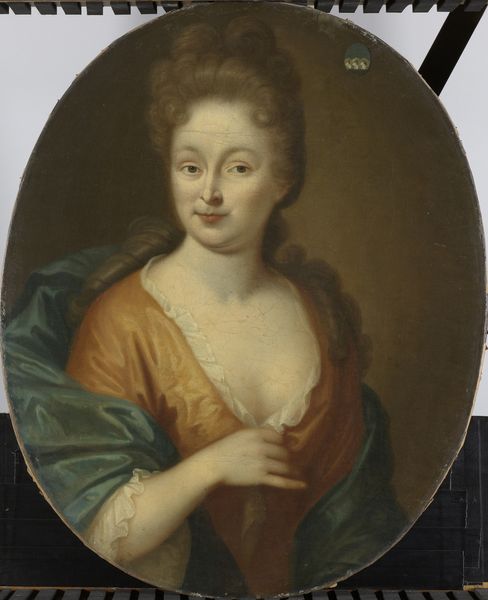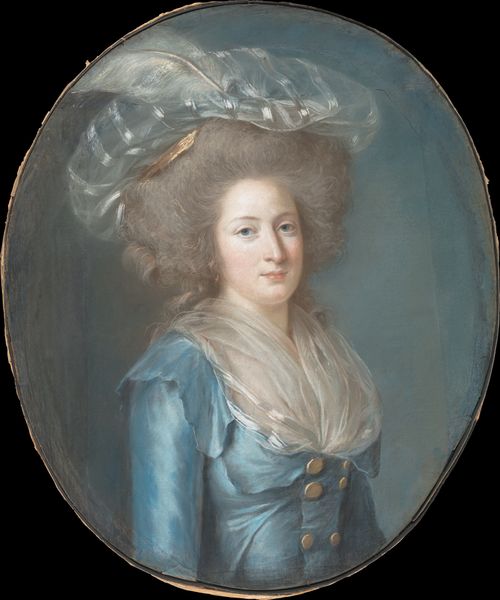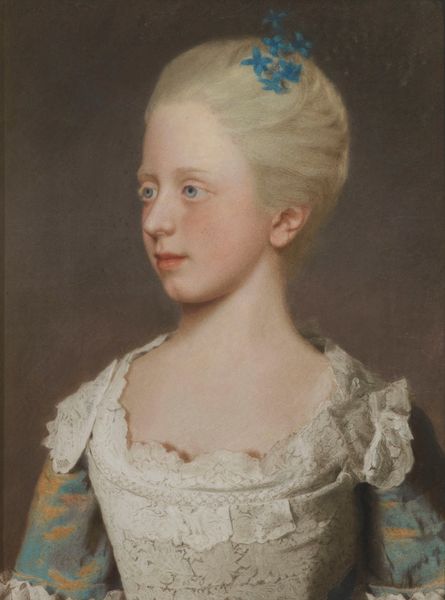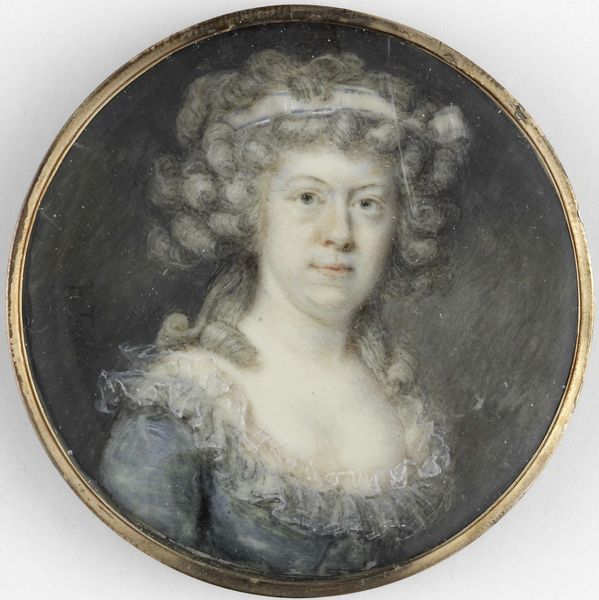
Dimensions: 70.5 cm (height) x 55.5 cm (width) (Netto)
Editor: Here we have Jens Juel's "Charlotte Sophie Gerner, f. Rasch, Henrik Gerners hustru," painted in 1785, using oil on canvas. I find the subdued colors quite striking, almost austere, which contrasts oddly with the elaborate hairstyle. What do you see in this piece, from your perspective? Curator: The painting offers an interesting glimpse into the social fabric of the late 18th century. Portraiture served not only as a personal memento, but also as a potent symbol of status. Consider how the subject's clothing and hairstyle adhere to the period's strict codes of aristocratic fashion. This wasn't simply about individual expression; it was about conforming to and visually broadcasting one’s place within the social hierarchy. Do you think the painting is a celebration or critique of this social positioning? Editor: That's a fascinating point about the symbolism of status. I hadn't considered that it might be read as a critique. I was too busy admiring, or perhaps judging, the gigantic hair! So, maybe it is less about celebrating the individual and more about reinforcing societal norms? Curator: Precisely! Artists like Juel often navigated a delicate balance: they needed to flatter their patrons while simultaneously adhering to evolving artistic conventions and sometimes subtly commenting on society. The setting is important too; where this work was displayed, for whom it was produced, and how it served a broader social function are crucial to its understanding. Consider its display within the larger collection of the museum. How might that context shape our interpretation of it? Editor: That gives me a lot to consider. I always looked at portraits as individual depictions, but it's eye-opening to think about them as playing a role in a much larger cultural narrative. Curator: Indeed. The portrait becomes more than just an image of a woman; it transforms into a valuable historical document, reflecting the values, expectations, and power dynamics of its time. I've found our discussion quite insightful. Editor: Absolutely. Thanks, I definitely have a fresh perspective on these works of art and a lot more to explore.
Comments
No comments
Be the first to comment and join the conversation on the ultimate creative platform.
